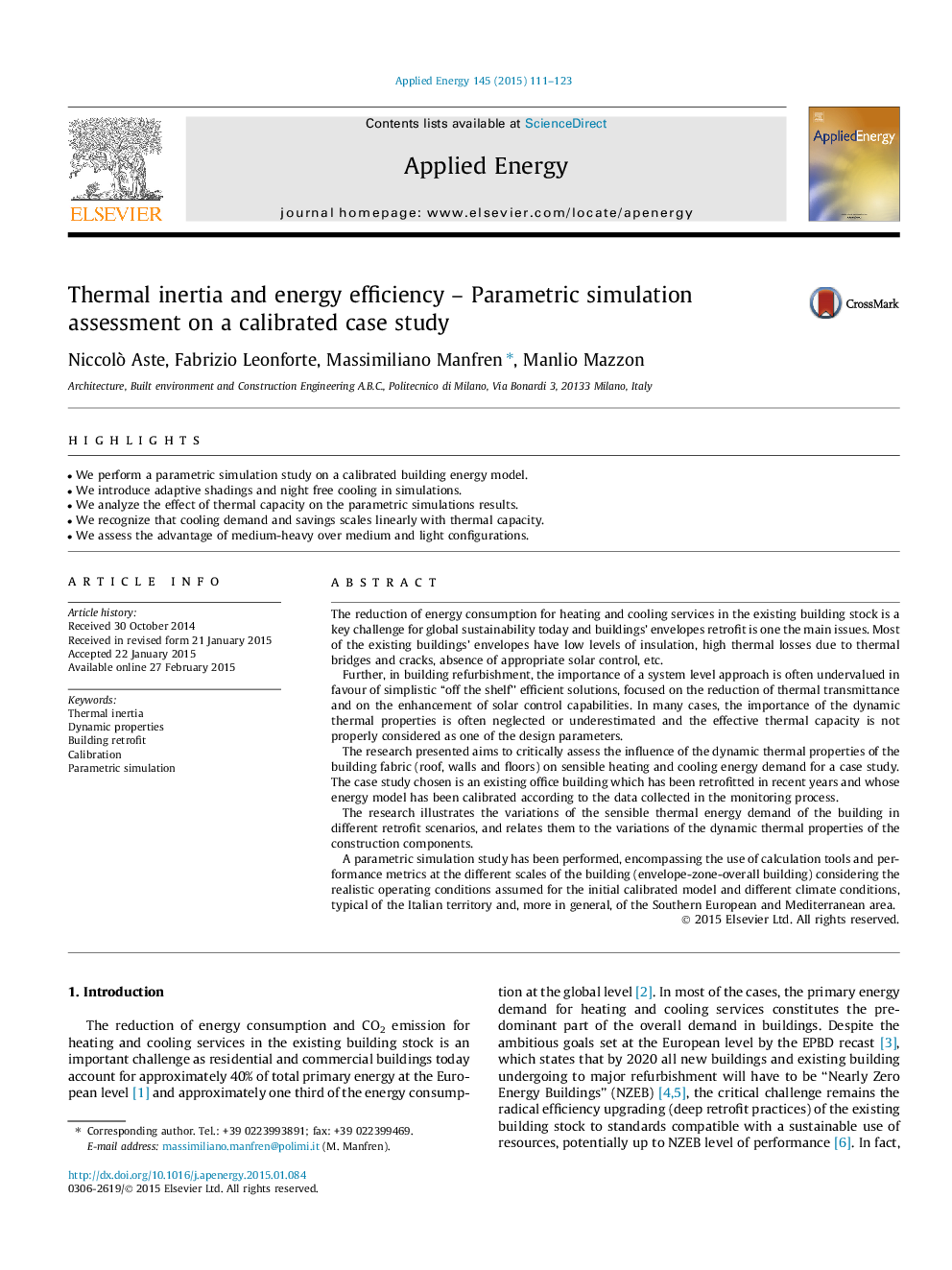| Article ID | Journal | Published Year | Pages | File Type |
|---|---|---|---|---|
| 242542 | Applied Energy | 2015 | 13 Pages |
•We perform a parametric simulation study on a calibrated building energy model.•We introduce adaptive shadings and night free cooling in simulations.•We analyze the effect of thermal capacity on the parametric simulations results.•We recognize that cooling demand and savings scales linearly with thermal capacity.•We assess the advantage of medium-heavy over medium and light configurations.
The reduction of energy consumption for heating and cooling services in the existing building stock is a key challenge for global sustainability today and buildings’ envelopes retrofit is one the main issues. Most of the existing buildings’ envelopes have low levels of insulation, high thermal losses due to thermal bridges and cracks, absence of appropriate solar control, etc.Further, in building refurbishment, the importance of a system level approach is often undervalued in favour of simplistic “off the shelf” efficient solutions, focused on the reduction of thermal transmittance and on the enhancement of solar control capabilities. In many cases, the importance of the dynamic thermal properties is often neglected or underestimated and the effective thermal capacity is not properly considered as one of the design parameters.The research presented aims to critically assess the influence of the dynamic thermal properties of the building fabric (roof, walls and floors) on sensible heating and cooling energy demand for a case study. The case study chosen is an existing office building which has been retrofitted in recent years and whose energy model has been calibrated according to the data collected in the monitoring process.The research illustrates the variations of the sensible thermal energy demand of the building in different retrofit scenarios, and relates them to the variations of the dynamic thermal properties of the construction components.A parametric simulation study has been performed, encompassing the use of calculation tools and performance metrics at the different scales of the building (envelope-zone-overall building) considering the realistic operating conditions assumed for the initial calibrated model and different climate conditions, typical of the Italian territory and, more in general, of the Southern European and Mediterranean area.
